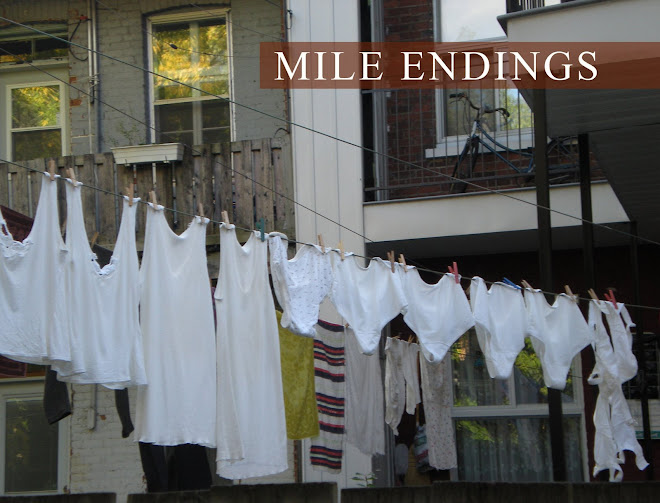 Every day, late in the afternoon, in the alley between Parc Avenue and Jeanne Mance, John takes his position near the dumpsters, and waits for his flock.
Every day, late in the afternoon, in the alley between Parc Avenue and Jeanne Mance, John takes his position near the dumpsters, and waits for his flock.Pigeons flutter down from the rooftops and wires and flap up from the pavement where they've been pecking at stray sesame seeds. They whir through the air to land on his wrists and knees.
John pulls a peanut from the pouch around his waist and cracks it open. A white speckled bird on his hand bobs for the nut in the shell. John murmurs to it and strokes its neck.
Two small blond Hasidic boys stop and watch , fascinated, until their father pulls them away.
Other people aren't intrigued. "He must be so dirty with them all over him like that," remarks a 14-year-old girl who says he's been on that corner with the pigeons for as long as she can remember.
"People think pigeons are dirty," John shrugs. "They're dirty because people are dirty. People spit, throw garbage on the ground and the pigeons walk in it. I wash my hands after I touch them," he gestures with a yellowed thumbnail. "They don't spread disease.
"I've had warnings. It's against the law to feed pigeons in Montreal. But I like to feed them. It's my hobby."
John wears a yellow windbreaker and has a trim white beard. His grey hair curls out from under his baseball cap. His standards of cleanliness might not be everyone's but apart from the birds cloaking his arms and legs, he's neat and self-contained. He's lived on this alley, in the apartment building next to St-Viateur Bagels, for 25 years. In addition to the alley full of pigeons, he has two pairs of doves at home. He's originally from Hungary and says dove like the past tense of dive.
John speaks quietly and to hear him you have to get close which means getting into pigeon space. The pigeons hover at elbow height, wondering if I, too, might offer something as enticing as peanuts. One flaps against me and I jump at the surprising feathery touch and wave my arm so it won't land on me.
They are iridescent gray, or soft purplish brown, or white with speckles, they're beautiful and grimy like the alley.
All different colours of pigeons perch on John's shoulders, arms and hat, and their wiry red talons curl around his hand.
The owner of the St-Viateur Bagels, Joe Morena, strides by without a glance.
"He doesn't like me," John says. "He doesn't want me to feed them. But they come for the seeds from the bagels," he explains. "People eat their bagels, the seeds fall down, that's it."
If he didn't feed the pigeons, wouldn't there be fewer of them?
"Maybe a few less," John concedes. "But you can't get rid of them. They know where the food is."
He's not inclined to give up his hobby, even if it's unpopular with one of the street's most prominent entrepreneurs and also against the law. He goes through about eight pounds of peanuts a week during his regular shift. "I'm here from 4:00 to 8:00," he says. "They wait for me."

Sometimes John can be seen arriving at the lane behind his apartment by bicycle. He walks his bike through the patch where pigeons are scavenging for seeds. He hates the cars that kill them by speeding down the alley. He takes his time and looks down fondly as the pigeons crowd around his ankles.






